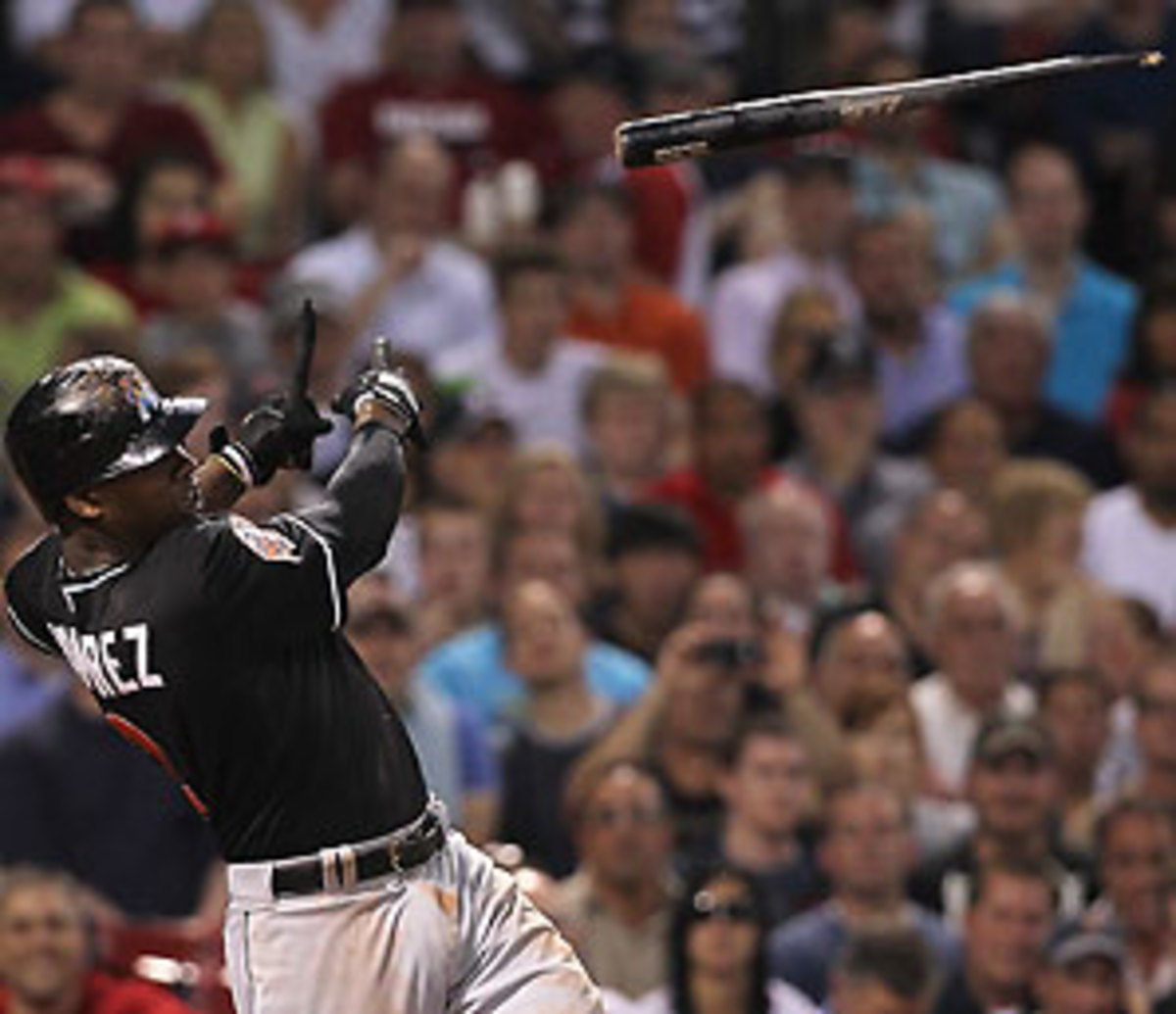
Sliding Marlins need slumping Ramirez to return to form
Has anybody seen Hanley Ramirez? Ramirez is still the guy playing third base for the Miami Marlins, but he's a shell of the player he was at 25 when he won the batting title hitting .342 in 2009.
Sure, everybody goes through slumps, and Ramirez is in a bad one: 14 straight games without an RBI while batting .170. But it's more than that. He didn't hit in 2011, either, and his numbers slid in 2010, too. At age 28, Ramirez should be in his prime years, but he is in a slow decline. Consider the table at right showing the breakdown of Ramirez's performance by age:
The player who looked like a Hall of Famer now looks like Jhonny Peralta the past three years (.272/.331/.429): decent, but not great. Ramirez can't buy a hit in clutch situations this year, forcing manager Ozzie Guillen to slip him into the second spot in the batting order. The Marlins admit he is pressing with runners on. But Ramirez also is inconsistent at the plate with his focus and mechanics, which he demonstrated in another 0-for-4 Thursday night in Boston.
Marlins hitting coach Eduardo Perez prefers that Ramirez turn his knee toward the catcher during his high leg kick. The slight cocking motion keeps Ramirez's hands high. The problem is that sometimes Ramirez lifts his knee straight up and sometimes he opens it toward third base when he lifts his leg -- in other words, three different leg kicks. If he doesn't use the one where his knee turns back, Ramirez's hands drop and his swing is too long to the ball.
The first two times Ramirez batted Thursday, he picked his knee straight up, and couldn't catch up to 92 mph fastballs from Daisuke Matsuzaka. The third time up he did turn his knee back. He flied out to right. This one night typified Ramirez's inconsistencies.
It's puzzling to watch. Ramirez is supremely talented and in what should be his prime years but the results don't match. Some on the Marlins believe Ramirez still thinks of himself as a leadoff hitter, and big-time run-producing responsibilities unsettle him. Whatever the case, the Marlins need Ramirez to get a whole lot closer to his 2009 batting form.
Marlins owner Jeffrey Loria held a pregame meeting Thursday night with the players at Fenway Park hoping to roust his club from a brutal month in which it has lost 13 of its past 15 games and is flirting with blowing up an entire business plan (open ballpark with a winning team, turn Miami into a baseball town, establish customer loyalty). What would help a lot more than Loria's speech is for Ramirez to awaken. As Perez said, "We need him to carry us for a month the way Giancarlo [Stanton] did in May. We all know he can do it."
When I asked one veteran coach what percentage of pitchers use pine tar or a similar substance to get a better grip on the baseball, this was the response: "About 80 percent." And that's why Rays manager Joe Maddon was so angry with Nationals manager Davey Johnson for calling out Tampa Bay reliever Joel Peralta for keeping the sticky stuff in his glove. Using pine tar, especially when mixed with resin and a few beads of sweat, provides just the right tackiness to spin breaking balls. As long as what is a rules infraction isn't blatant -- think Kenny Rogers' hand or Joe Blanton's hat in World Series play -- nobody seems to care much. That is, nobody but Johnson.
Johnson had the rules on his side. Maddon had established protocol on his side. Each of them had a legitimate claim to being right.
MLB had no choice but to suspend Peralta for eight games. Why? Pitchers Julian Tavarez in 2004 and Brendan Donnelly in 2005 each were suspended 10 days for pine tar infractions. (Yes, it's been that long since a manager sniffed it out, which underscores the rarity of Johnson's gambit.) Both players filed an appeal and were able to get their suspension knocked down to eight days.
A few years later, the Playing Rules Committee changed the penalty for violating Rule 8.02 (the part about no foreign substances on a ball) to 10 games. So why did Peralta get eight games? In recent years MLB has tried to come up with what it believes are penalties that would be in place after an appeals process. In other words, they essentially build in the appeal process without having to waste the time, effort and money of an actual appeal.
JAFFE: MLB needs to change inconsistent suspension policy
The Daisuke Matsuzaka era is coming to an end in Boston, this being the last year of the Red Sox' $103 million investment in the righthander. He will pitch somewhere next year -- perhaps in the NL or in Japan, but most likely not in the AL East. Why not the AL East? His stuff and his refusal to attack hitters just don't play in the division. Check this out:
That's reason enough for an NL team to take a flier on him. While Matsuzaka did have his moments with Boston, he was never the front-of-the-rotation pitcher it expected him to be. His start Thursday night showed no growth from the pitcher he always has been: a guy who wastes too many pitches and leaves too many outs for the bullpen to pick up. He lasted only 5 1/3 innings, throwing 101 pitches. Matsuzaka has failed to get through six innings in 46 of his 108 major league starts, or 43 percent of the time.
Boston paid for an ace and got Kyle Kendrick -- at a cost of an extra $97 million. Check out the righthanded doppelgangers:





